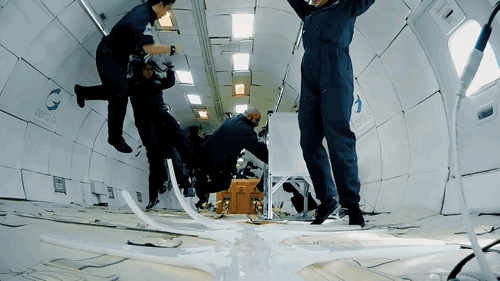
MIT MEDIA LAB
Spatial FluxPneumatic surface that morphs to the human body in zero gravity.
Spatial Flux is a seamless pneumatic surface that morphs to embrace the human body in zero gravity. Space is precious in confined quarters, not only in outer-space, but here in our dense urban fabric as well. The creation of temporal architecture—an architecture that coexists with the body yet ceases to exist when the body no longer requires anything from it—is fundamental to the design of tomorrow’s city. Zero gravity could be a fundamental stepping stone in the way we approach design. It forces us to critique architectural language itself.
In collaboration with Carson Smuts and Kent Larson at the MIT Media Lab City Science Group
New spatial constraints
Spatial Flux is a seamless pneumatic surface that morphs to embrace the human body in zero gravity. Space is precious in confined quarters, not only in outer-space, but here in our dense urban fabric as well. The creation of temporal architecture—an architecture that coexists with the body yet ceases to exist when the body no longer requires anything from it—is fundamental to the design of tomorrow’s city. Zero gravity could be a fundamental stepping stone in the way we approach design. It forces us to critique architectural language itself.
Pneumatic materiality
Freed from the constraints of gravity, we explored new forms of rapid inflatable prototyping to understand the possibilities for surfaces in this type of environment. After numerous iterations, we developed a poured, silicone pneumatic module that had the ability to morph and maintain its form in zero gravity. This approach allowed for the creation of structures that are both lightweight and responsive, adapting to the needs of the user in real-time.
Physical interaction
We reimagined the module without traditional XYZ references to develop for space. The physical interaction of the surface emerged from this thinking—the surface remains flat until activated by a human in space with the intent to sleep. It then morphs around the body to support this condition by inflating and deflates to a neutral state when not needed. This responsive behavior creates a dynamic relationship between the user and the environment, enhancing comfort and functionality in microgravity.
For more information, please visit the City Science Group Project Page and the MIT Media Lab post on the Zero G Flight.